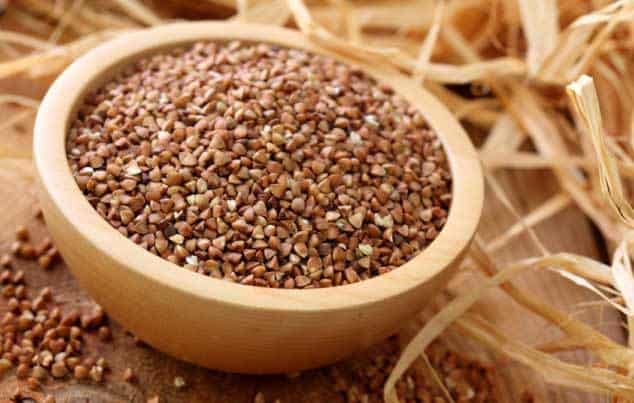With a name like buckwheat, it would be understandable to assume it’s a form of wheat. Right? Well, if you were to make this assumption, you’d be completely wrong. Turns out that buckwheat isn’t a grain, like wheat. It’s actually a fruit seed related to rhubarb.
The fact that buckwheat is a seed rather than a grain makes it gluten-free, so it’s a suitable option for people with sensitivity to wheat or gluten. And due to the fact that this seed has many of the same characteristics as a grain, it’s a good substitute for things like rice. You can even ground it up to make various types of noodles, such as soba.
Not only is this gem of a seed versatile, but buckwheat is considered one of the healthiest foods we can eat. Here are a few reasons it’s held in such high esteem:
- Buckwheat is low on the glycemic index. Unlike wheat and rice, buckwheat won’t cause a spike in your blood sugar levels. (As a side note, although brown rice rates almost as high as white rice on the glycemic index, there are plenty of reasons to eat whole, organic brown rice.)
- Buckwheat lowers blood pressure and LDL (bad) cholesterol. It’s higher in protein than grains such as rice, wheat, and corn, and it’s also high in lysine and arginine, essential amino acids that lower LDL cholesterol. In addition, this nutritional combination prohibits angiotensin-converting enzyme (ACE) activity, which lowers blood pressure.
- Buckwheat is high in nutrients, including calcium, vitamin E, and all of the B vitamins—especially B17, or nitriloside, a defender against cancer.
- While buckwheat is low in fat, what fat it does contain is of the heart healthy variety, in the form of monounsaturated fatty acids.
Dr. Royal Lee was quick to recognize the health benefits of buckwheat. In his 1948 article The Vitamin P Group of the C Complex, Lee calls buckwheat “a valuable source of rutin, the vitamin C component that is important in stopping capillary hemorrhages.”
Buckwheat is another great example of how real whole foods can bring us closer to optimal health. How can you reap the rewards of incorporating buckwheat into your diet?
- Breakfast: In Super Breakfast Cereals: Whole Grains for Good Health and Great Taste, Katharina Gustavs provides both a dry roasting method for buckwheat groats (hulled) and a recipe for buckwheat pancakes. You can’t get much more breakfast-y than pancakes, and this version won’t mess with your blood sugar levels. You can also combine it with oats or millet to make a satisfying porridge that will stick with you all morning long.
- Lunch and Dinner: Since I often eat dinner leftovers for lunch, I find it hard not to lump these meals together. Kasha, or hulled buckwheat, makes a delicious dish when baked with onions, butter, extra virgin olive oil, potatoes, and seasonings. Another recipe I’m curious about combines buckwheat groats and nuts, along with several other ingredients, to make a loaf that can be served as the main course of a meal.
- Snacks: Sally Fallon’s Nourishing Traditions includes a recipe for buckwheat crepes that you can make ahead of time and serve with your choice of fillings, sweet or savory. Since the dry roasted groats can be ground into flour, you can also use buckwheat to make muffins, breads, and even crackers. A simple Internet search brings up all sorts of recipe ideas.
No matter how you look at it, buckwheat is a worthy staple in your pantry. If you’re a fan of this nutritious seed, what’s your favorite recipe?
Photo from iStock/egal



